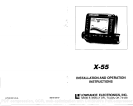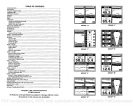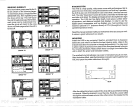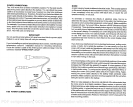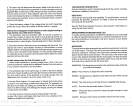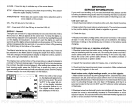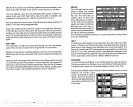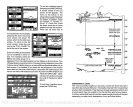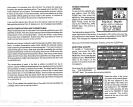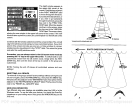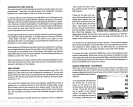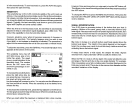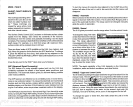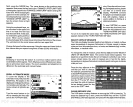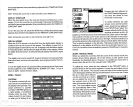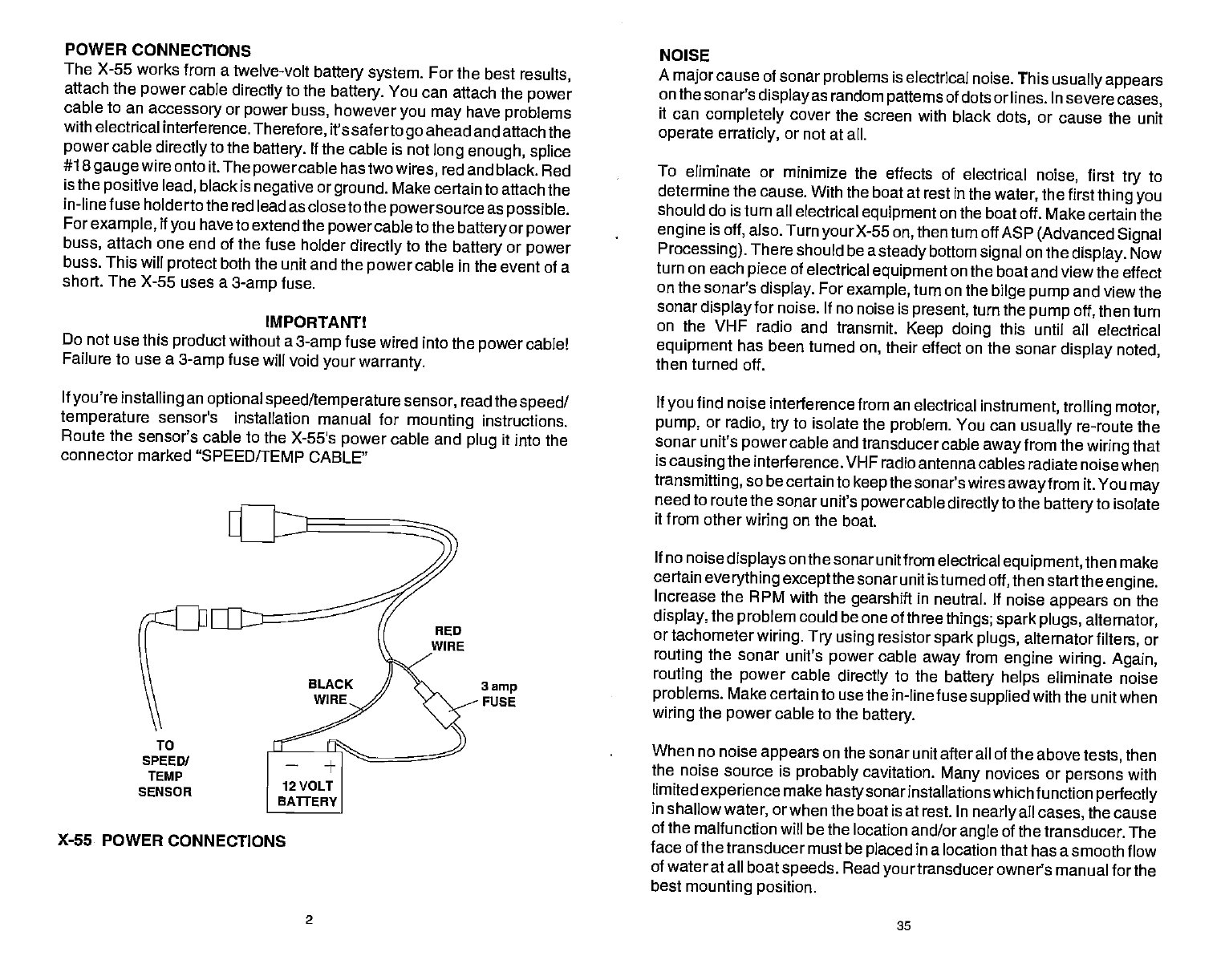
POWER
CONNECTIONS
The X-55 works from a
twelve-volt
battery system.
For the best
results,
attach
the
power
cable
directly
to the
battery.
You can attach
the
power
cable
to an
accessory
or
power buss,
however
you may
have
problems
with
electrical
interference.
Therefore,
its
saferto
go
ahead and
attach the
power
cable
directly
to the
battery.
If the
cable is not
long enough,
splice
#18
gauge
wire onto it.
The
powercable
hastwo
wires,
red and
black. Red
is the
positive lead,
black is
negative
or
ground.
Make certain to
attach the
in-line fuse holderto the
red lead as close tothe
powersource
as
possible.
Forexample,
if
you
have to extend the
powercable
to the
battery
or
power
buss,
attach one end of the
fuse holder
directly
to the
battery
or
power
buss. This will
protect
both the unit and the
power
cable in
the event of a
short. The X-55 uses
a
3-amp
fuse.
IMPORTANT!
Do not use this
product
without a
3-amp
fuse wired into the
power
cable!
Failure to use a
3-amp
fuse will void
your
warranty.
If
you're installing
an
optional speed/temperature
sensor,
read
the
speed/
temperature
sensor's installation
manual for
mounting
instructions.
Route the
sensor's cable to the X-55's
power
cable and
plug
it into the
connector marked
"SPEED/TEMP
CABLE"
NOISE
A
major
cause
of sonar
problems
is electrical noise.
This
usually appears
on the sonar's
display
as random
patterns
of dots
orlines. In severe
cases,
it can
completely
cover the
screen with black
dots,
or
cause the unit
operate
erraticly,
or not at all.
To
eliminate or minimize the
effects of electrical
noise,
first
try
to
determine the
cause. With the boat
at rest in the
water,
the first
thing you
should
do is turn all electrical
equipment
on the boat off.
Make certain
the
engine
is
off,
also. Turn
your
X-55
on,
then turn off
ASP
(Advanced
Signal
Processing).
There should be a
steady
bottom
signal
on the
display.
Now
turn
on each
piece
of
electrical
equipment
on the
boat and view the effect
on the
sonar's
display.
For
example,
turn on the
bilge
pump
and view
the
sonar
display
for noise. If no
noise is
present,
turn the
pump
off,
then
turn
on
the VHF radio and
transmit.
Keep
doing
this until all electrical
equipment
has been
turned
on,
their effect on
the sonar
display noted,
then
turned off.
If
you
find
noise interference from an
electrical
instrument,
trolling motor,
pump,
or
radio,
try
to
isolate the
problem.
You can
usually
re-route the
sonar
unit's
power
cable
and transducer cable
away
from the
wiring
that
is
causing
the interference. VHF
radio antenna
cables radiate noise
when
transmitting,
so be
certain to
keep
the sonar'swires
awayfrom
it. You
may
need to route the
sonar unit's
power
cable
directly
to the
battery
to
isolate
it from other
wiring
on
the boat.
If no noise
displays
on
the sonar
unitfrom electrical
equipment,
then make
certain
everythingexceptthesonarunitisturned off,
then
starttheengine.
Increase the
RPM with the
gearshift
in neutral. If noise
appears
on the
display,
the
problem
could be one of
three
things; spark plugs, alternator,
or tachometer
wiring. Try using
resistor
spark plugs,
alternator
filters,
or
routing
the
sonar unit's
power
cable
away
from
engine
wiring. Again,
routing
the
power
cable
directly
to
the
battery helps
eliminate noise
problems.
Make certain to use the
in-line fuse
supplied
with
the unit when
wiring
the
power
cable to the
battery.
When
no noise
appears
on the
sonar unit after all of the
above
tests,
then
the noise
source is
probably
cavitation.
Many
novices or
persons
with
limited
experience
make
hasty
sonarinstallations which function
perfectly
in
shallow
water,
orwhen the
boat is at rest. In
nearly
all
cases,
the cause
of the
malfunction will be the
location and/or
angle
of the
transducer. The
face of
the transducer must be
placed
in a location that has a
smooth flow
of
water at all boat
speeds.
Read
your
transducer owner's
manual for the
best
mounting position.
2
35
FlED
SPEED!
TEMP
SENSOR
X-55 POWER
CONNECTIONS
3
amp
FUSE
PDF compression, OCR, web-optimization with CVISION's PdfCompressor



